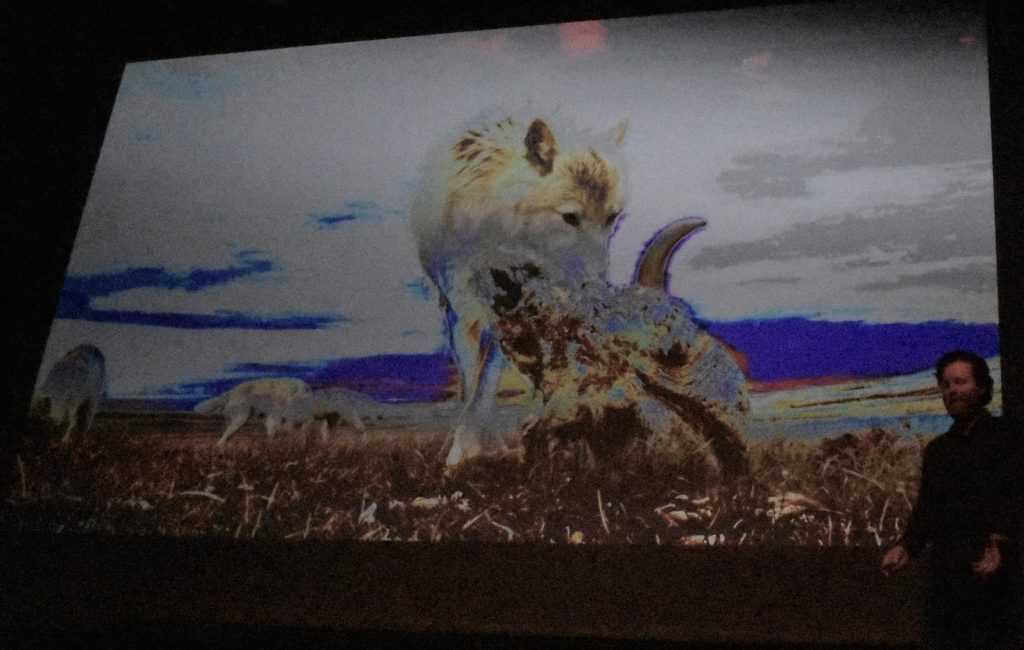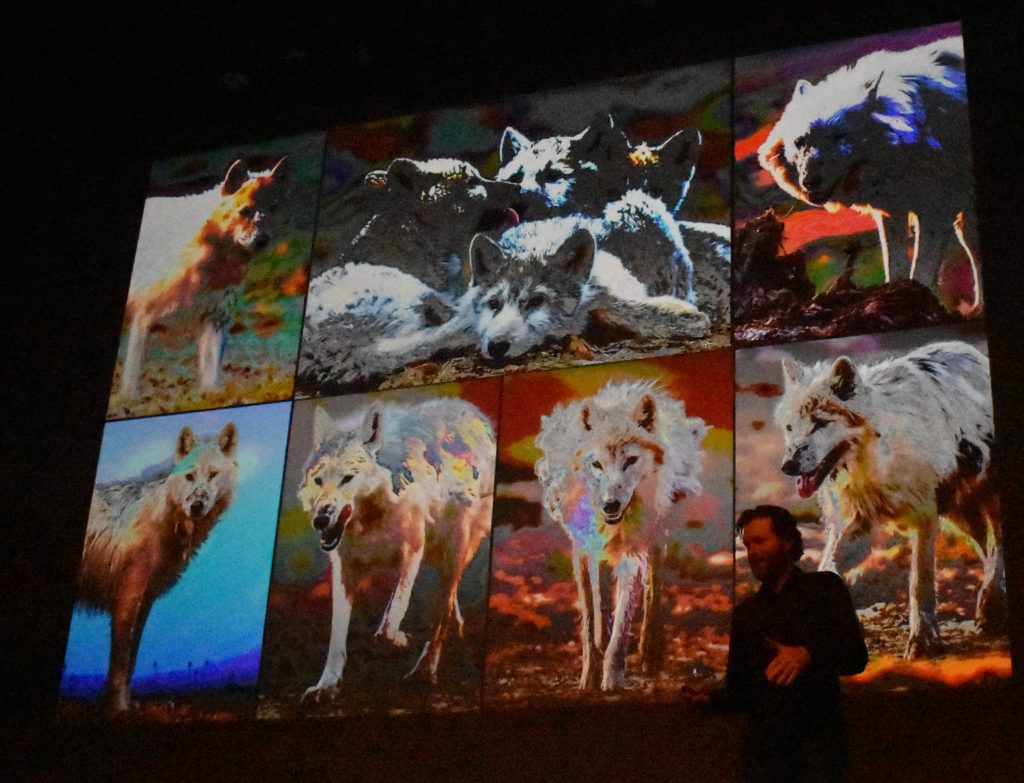News
Wolves Subject of Ronan Dovonan Talk At SCLT Fundraiser

One of Donovan’s photos in Yellowstone
The howl of an Arctic wolf filled Kinnison Hall at the Whitney Center at Sheridan College, when photographer Ronan Donovan spoke about his three month stay among the wolves on Ellesmere Island, illustrated by a slide show and video.
The talk was the main event of the evening at the Sheridan County Land Trust (SCLT) annual fundraiser, In Bloom held on Oct. 20 at the Whitney Center for the Arts at Sheridan College.
Susan Holmes, President of SCLT and Bob Grammens, Sheridan Media General Manager, welcomed the guests in attendance. Sheridan Media was the title sponsor of the event.
“Your all here for a reason. Think of where we live, Sheridan County. Open spaces, beautiful mountains, fresh water….it is our obligation, not only today but moving forward for generations that we keep this going,” Grammens said.
The live action and paddle raise fundraiser followed, with Mike Evers as the auctioneer.
Brad Bauer, Executive Director of the SCLT, introduced Ronan Donovan, the featured speaker. Bauer and Donovan are long time friends.
Since 2011, Donovan has photographer wildlife on all seven continents, and has won several awards for his photography. His work has appeared in National Geographic as well as on the television series, “Planet Earth”
Dovonvan’s talk and slide show at the In Bloom program centered around wolves. He was interested in contrasting the wolves in Yellowstone with the life of a wolf in the Arctic.
Donovan said his brother had a wolf hybrid which Donvan said was ‘very smart’. The wolf learned if he wanted out of the pickup he could sit in the driver’s seat and beep the horn. This was Donvan’s first introduction to wolves, and he became interested in how the domestication of wolves came about.
It seemed that when the Neanderthal Man observed the wolves, they saw this animal that was similar to man, hunted meat, and lived in family packs. The wolves would come near the camps and scavenge for food. Soon, they formed a collaborative agreement with the humans.
Donovan said the wolves he observed in Yellowstone are very shy and very scared of people, and he wondered how the domestication could have come about.
He said Yellowstone wolves compete with man, and are hunted by man, which changes the way they interact with man.

Donovan wanted to find wolves that haven’t had much interaction with man, he wanted to see a more natural wolf. “I felt that the Yellowstone Wolves exhibited this fear. I wanted to see wolves without the fear.”
In 2018, he spend three months on Ellesmere Island, the most northern point in Canada, not far from Greenland. The wolves there had never been hunted and were not afraid of humans. He said this about why he went and what type of landscape it was.
He followed a pack he named the Polygon Pack after the Polygon glacial ponds in the area.
After talking about the pack, and the names he gave some of the individuals, ‘Bright Eyes,’ ‘One Eye’, and ‘Clean Coat,’ were a few of the names.

He then let the wolves introduce themselves.
He shared a video taken of the pack hunting muskoxen. He said muskoxen are very apt at protecting themselves, and the wolves are only successful about 20% of the time taking down a muskox.
In the video Donovan caught the hunt, and even though the wolves tried to take down a young calf, the older muskox attacked the wolf, pushing her off the calf and rolling her down a bank. The wolf, whom Donovan named ‘Bright Eyes,’ wasn’t injured in the encounter, but the wolves went hungry that day and gave up on their aggressive prey.
Donovan opened the floor to questions, and he said that his next trip is back to Uganda, where he has been several times, to photograph chimpanzees.
According to Chris Vrba, SCLT director of marketing and development, “In Bloom was a tremendous success. There were about 140 people in attendance about a little more than $50,000 was raised to conserve local lands and ranches. It really reinforces what we know: Sheridan County’s a truly special place, and it’s filled with kind people who care deeply about the place they call home. Last night was a celebration of the working lands and open spaces, the birds and wildlife that live in them and the clean water that flows through them. That’s the essence of Sheridan County and it’s our kind people who care who make it truly special.”

